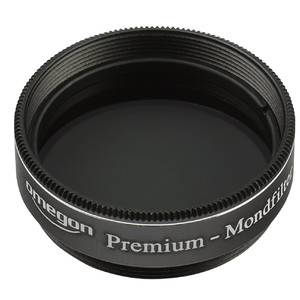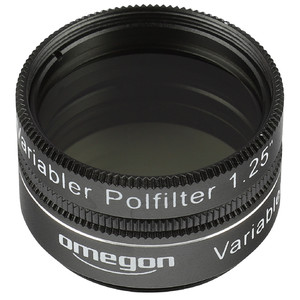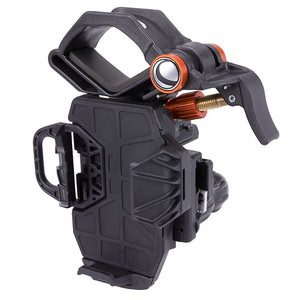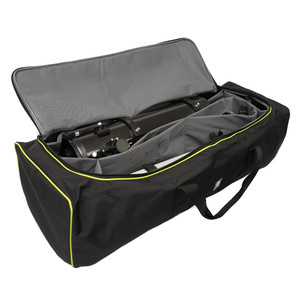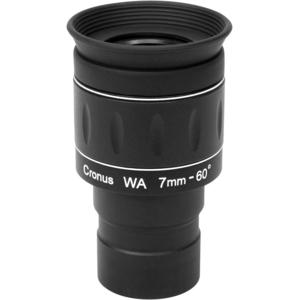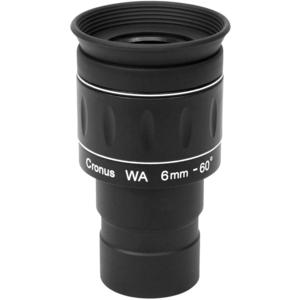Tyvärr har den här beskrivningen ännu inte översatts till svenska, så du hittar en engelsk artikelbeskrivning här.
The StarSense Explorer telescope uses your smartphone to analyze the night sky and calculate its position in real time. StarSense Explorer is ideal for beginners thanks to the app’s user-friendly interface and detailed tutorials. It’s like having your own personal tour guide of the night sky.
Leave complicated star charts, imprecise planetarium apps, and computerized mounts behind. With StarSense Explorer, locating objects has never been easier, faster, or more accurate. Within minutes of setting up the telescope, you’ll be navigating the sky with confidence. Simply place your phone in the unique StarSense dock and launch the StarSense Explorer app. After aligning your phone to the telescope’s optics (a quick, 2-minute procedure), StarSense Explorer generates a list of celestial objects currently visible. Make your selection and arrows appear onscreen, guiding you as you to move the telescope. When the object is ready to view, the bullseye turns green.
StarSense Explorer uses patent-pending technology and your smartphone to determine exactly where the telescope is pointed in the night sky. A Lost in Space Algorithm (LISA), like the ones satellites use in orbit to correctly reorient themselves, helps the app match star patterns it detects overhead to its internal database.
Even if you live in a light polluted city location, StarSense Explorer is advanced enough to be able to pick out Jupiter, Saturn, Venus, the Orion Nebula, double stars, and a few more of the most famous celestial objects.
The minimum SmartPhone requirements and a list of already tested models is available here: https://starsenseexplorer.simcur.com/
The AC 102/660 refractor, with its relatively large aperture and short focal length, is ideal for a view of big sky areas at low magnification. Wide-stretched objects, such as open star clusters, the Orion nebula and the Andromeda galaxy can be surveyed. It’s also great for hunting comets. During certain phases of activity these can be as large as the full Moon or even bigger, and can be easily observed with this refractor.
Thanks to the short focal length this refractor telescope is compact and the eyepiece is set relatively high.
The DX mount is azimuthal, meaning that the telescope can only be moved vertically or along the azimuth. Azimuthal mounts are intuitive to use, easy to set up and do not require any heavy counterweights. The DX mount has two pliable shafts with a large rotating knob. These shafts enable precise movement of each axis so that it is very easy to position celestial objects, such as the Moon or the planets, in the centre of the image field and to keep them there.
The optics can easily be detached using the clamps with the large grips. This splits the telescope into its two component parts of optical tube and mount - ideal for simple transportation and storage. The clamp is calibrated and also accommodates most other small scopes by other manufacturers.
The aluminium tripod is stabilised using an accessory tray. Due to its very low weight, it only marginally increases the lightweight telescope's overall weight.
It not only matters which telescope you buy but also where you buy it. Our additional services:
- We are a leading telescope dealer and know the devices we sell. Our customer service team will gladly help you after your purchase if you have problems with assembly or operation.
- We provide a copy of the 80-page "Telescope ABC" beginners handbook with every telescope.

